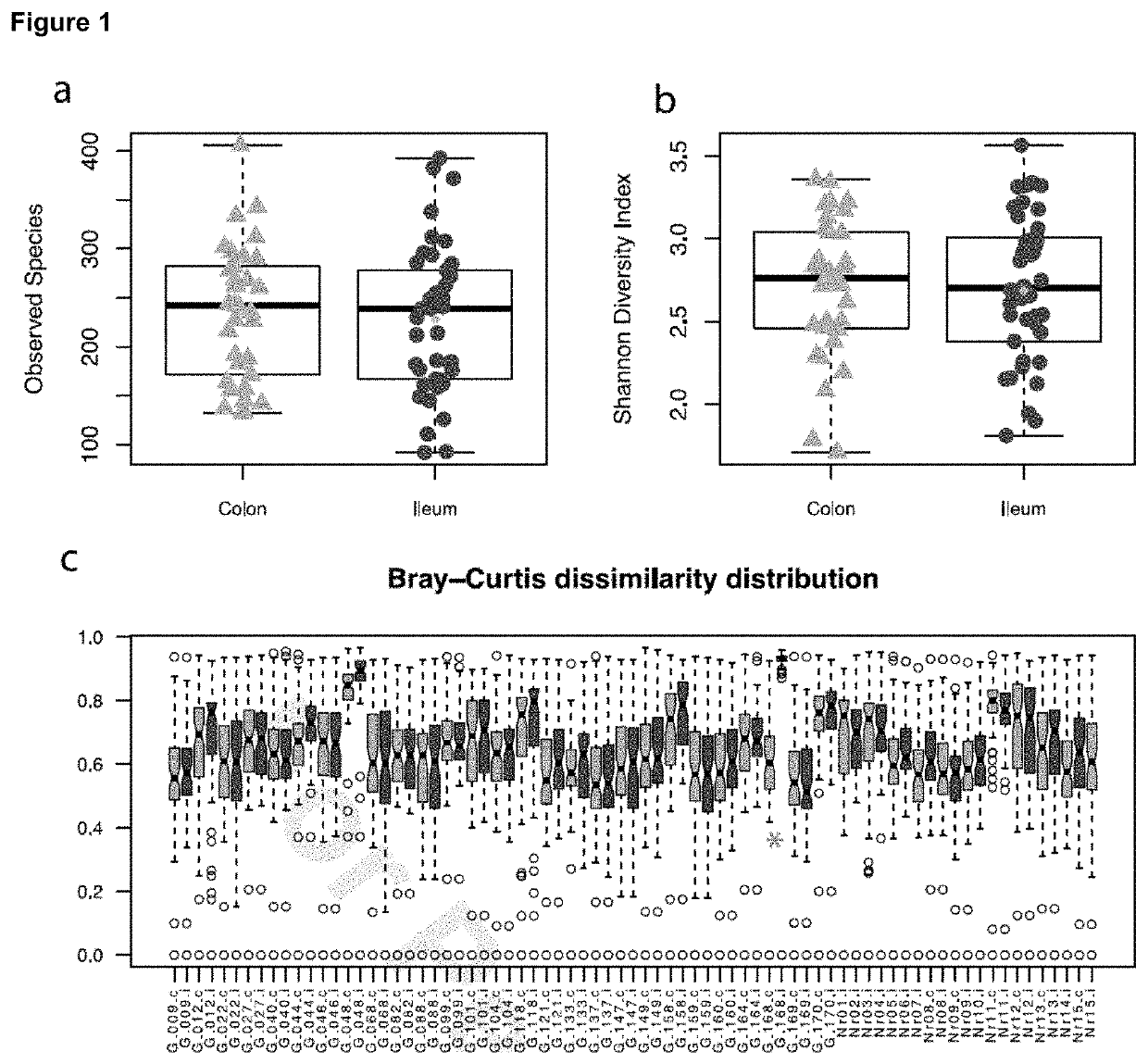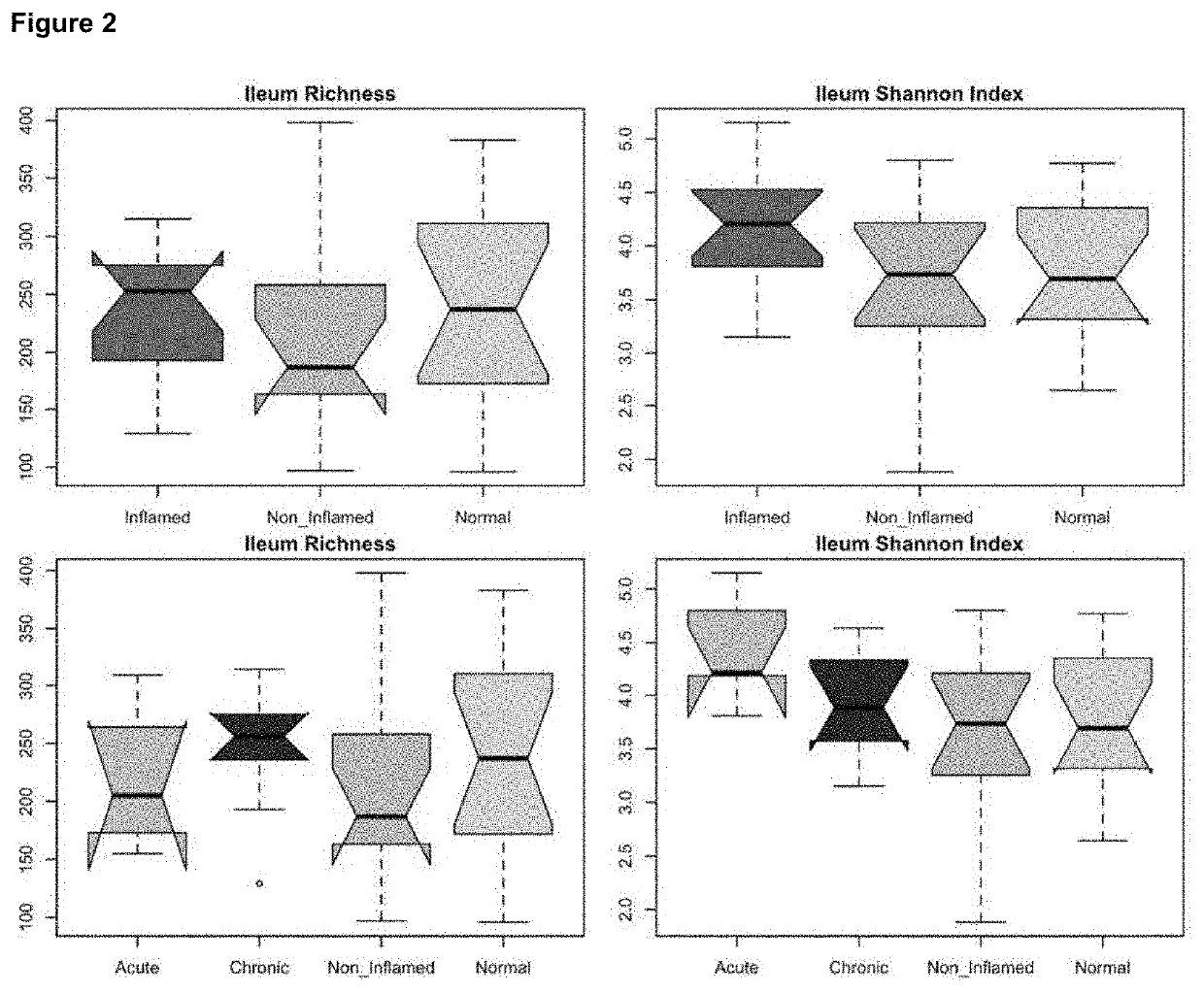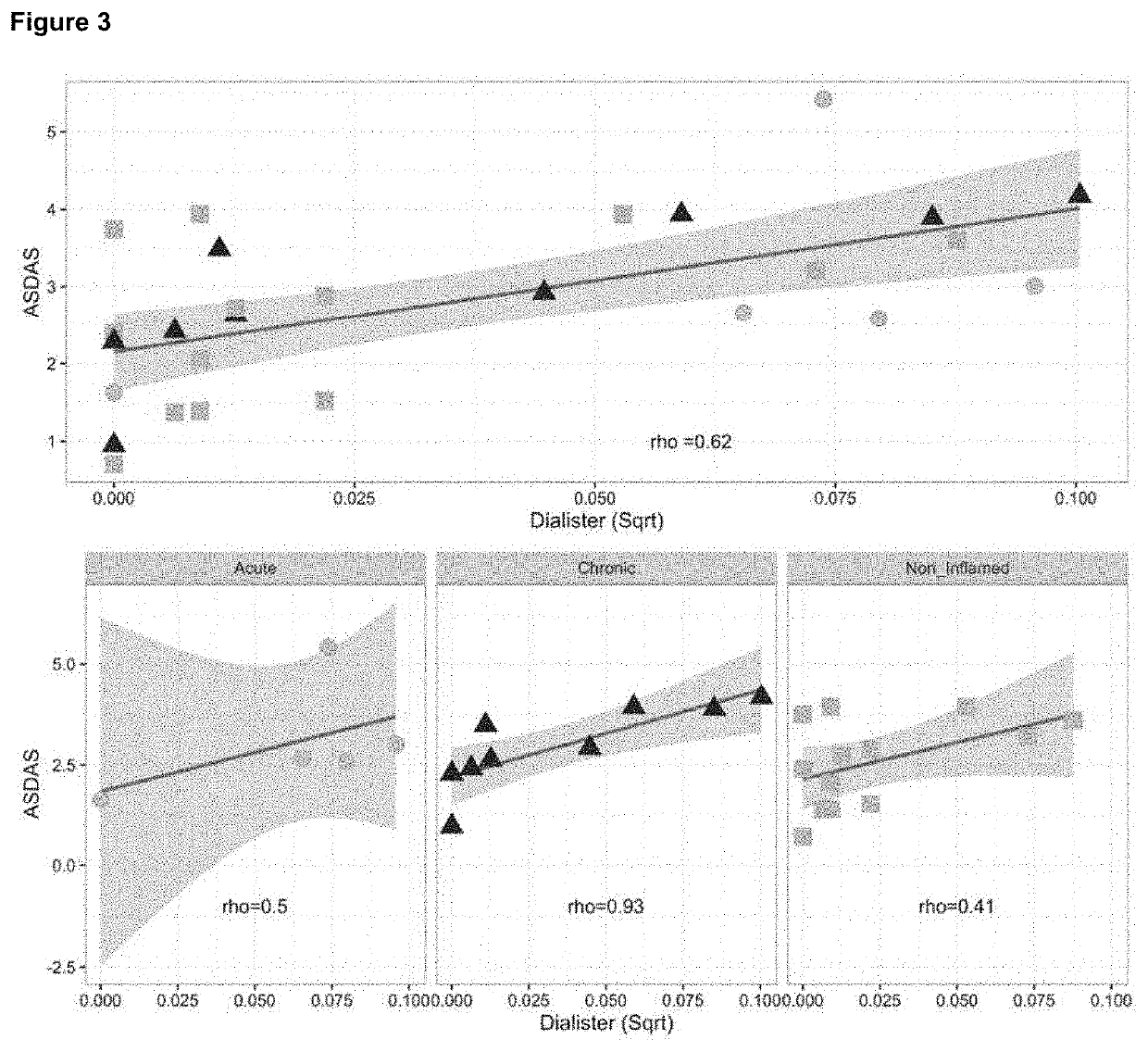Means and Methods to Treat Inflammation-Associated Disorders or Conditions
a technology for inflammation-associated disorders and conditions, applied in the field of inflammation-associated disorders or conditions, can solve the problems of virtually non-existent effective preventive treatment of spondyloarthritis, both limitations, etc., and achieve the effects of positive affecting the inflammation status of a subject, lowering the disease score, and improving the quality of li
- Summary
- Abstract
- Description
- Claims
- Application Information
AI Technical Summary
Benefits of technology
Problems solved by technology
Method used
Image
Examples
example 1
Composition and Diversity Across Biopsy Samples
[0069]We first assessed overall variation of microbial composition and diversity across mucosal samples from 27 SpA patients and 15 healthy controls. SpA patient characteristics at baseline according to bowel histology are summarized in Table 2. Consistent with earlier reports, chronic inflammation was associated with younger age and male sex (p=0.010 and p=0.021, respectively). None of the other clinical characteristics (BMI, symptom duration, CRP, BASDAI, ASDAS, HLAB27, AS versus non-radiographic axial SpA, smoking status) were significantly associated with bowel histology. There was also no significant difference in NSAID index. Microbial diversity comprises richness (observed species; here measured by observed OTU richness, FIG. 1a) and evenness (how the relative abundance or biomass is distributed among species); these combined properties are measured by the Shannon Diversity index, FIG. 1b. Whole sample community composition-based...
example 8
nsplant Study
[0078]Next to selectively replacing Dialister spp. in SpA subjects, we perform fecal microbial transfer using healthy donors. The major aim here is to remove the dysbiotic microbiota associated with SpA disease and replace it by a more balanced (‘normobiotic’) gut community from donors without SpA diagnosis. After bowel preparation using a PEG solution, mice with SpA (TNFΔARE or SKG model) receive a fecal suspension of donor stool via a rectal route in three times. The fecal donor suspension contains a total of 200 grams of spontaneous stools from healthy donors collected during the 48 h before the procedure (and kept at 4° C.) that is homogenized with 400 mL sterile saline. To monitor the targeted alteration of the dysbiotic microbiota associated with SpA disease, stool samples of transplanted mice are collected for 16S rRNA sequencing at baseline, subsequently daily during the first week and then weekly for 8 weeks after fecal transfer. The donor sample that is used f...
PUM
| Property | Measurement | Unit |
|---|---|---|
| size | aaaaa | aaaaa |
| stiffness | aaaaa | aaaaa |
| physical function | aaaaa | aaaaa |
Abstract
Description
Claims
Application Information
 Login to View More
Login to View More - R&D
- Intellectual Property
- Life Sciences
- Materials
- Tech Scout
- Unparalleled Data Quality
- Higher Quality Content
- 60% Fewer Hallucinations
Browse by: Latest US Patents, China's latest patents, Technical Efficacy Thesaurus, Application Domain, Technology Topic, Popular Technical Reports.
© 2025 PatSnap. All rights reserved.Legal|Privacy policy|Modern Slavery Act Transparency Statement|Sitemap|About US| Contact US: help@patsnap.com



